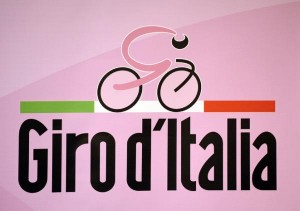Mythical and decisive mountain climb to feature on penultimate day
 The climb to the Tre Cime di Laveredo will be the final climb of next year’s Giro d’Italia, the race organiser has confirmed via its Twitter feed. With the full route to be officially announced on Sunday, September 30th, RCS Sport has been dropping teasing details about some of the race’s key features. Last week it was confirmed that the fifteenth stage would cross the border into France, and finish on top of the Col du Galibier, in tribute to the late Marco Pantani; where that announcement featured details of the stage’s course, today’s announcement only confirms that the climb will be used.
The climb to the Tre Cime di Laveredo will be the final climb of next year’s Giro d’Italia, the race organiser has confirmed via its Twitter feed. With the full route to be officially announced on Sunday, September 30th, RCS Sport has been dropping teasing details about some of the race’s key features. Last week it was confirmed that the fifteenth stage would cross the border into France, and finish on top of the Col du Galibier, in tribute to the late Marco Pantani; where that announcement featured details of the stage’s course, today’s announcement only confirms that the climb will be used.
The ‘tweet’ does not actually confirm that the stage will finish on top of the climb but, since the road up from Cortina d’Ampezzo is a dead end, it can hardly do anything else. This will give the race a similar finale to the 2012 edition, whose penultimate stage finished atop the Passo dello Stelvio.
The Tre Cime are three rocky peaks – the Cima Piccola, Cima Grande and Cima Ovest – which loom over the provincial border between Bolzano and Belluno. The climb has been used just six times before, although that brief history is somewhat chequered. In 1967 the stage was taken by eventual winner Felice Gimondi, ahead of a youthful Eddy Merckx, but the stage result was annulled because so may riders benefitted from pushes on the way up.
The next year the race returned, and this time it saw a dominant display from Merckx that saw him take back the Maglia Rosa that he was not to let go of, and he went on take the first of his five Giro victories. The race didn’t return to the climb until Merckx’ fifth victory, and he came under enormous pressure from Spanish climber José Manuel Fuente; the Belgian lost most of his overall lead to Italian Gianbattista Baronchelli, but held on to win overall by just 12 seconds.
The climb proved more decisive in 1981, where it saw local rider Giovanni Battaglin take the Maglia Rosa – behind Swiss stage winner Beat Breu – and go on to take the Vuelta-Giro double that only Merckx had done before; and only Alberto Contador has done since.
The next visit to the climb came in 1989, where Luis Herrara took the stage victory, but it wasn’t until the following day that Laurent Fignon managed to take the Maglia Rosa from Erik Breukink. The Giro didn’t return for another 26 years, when the 15th stage of the 2007 race was taken by Riccardo Riccò, alongside teammate Leonardo Piepoli; both riders tested positive for third-generation EPO, CERA, the following year, which puts a big question mark against that result.
As Marco Pastonesi wrote in this morning’s Gazzetta dello Sport, “The Tre Cime deserve more respect, more purity.”
The last five editions of the Giro d’Italia have finished with individual time trials, but rumours say that this year’s edition will finish with a more conventional road stage; if this is the case then the Tre Cime di Laveredo will see the final competitive action of the race.